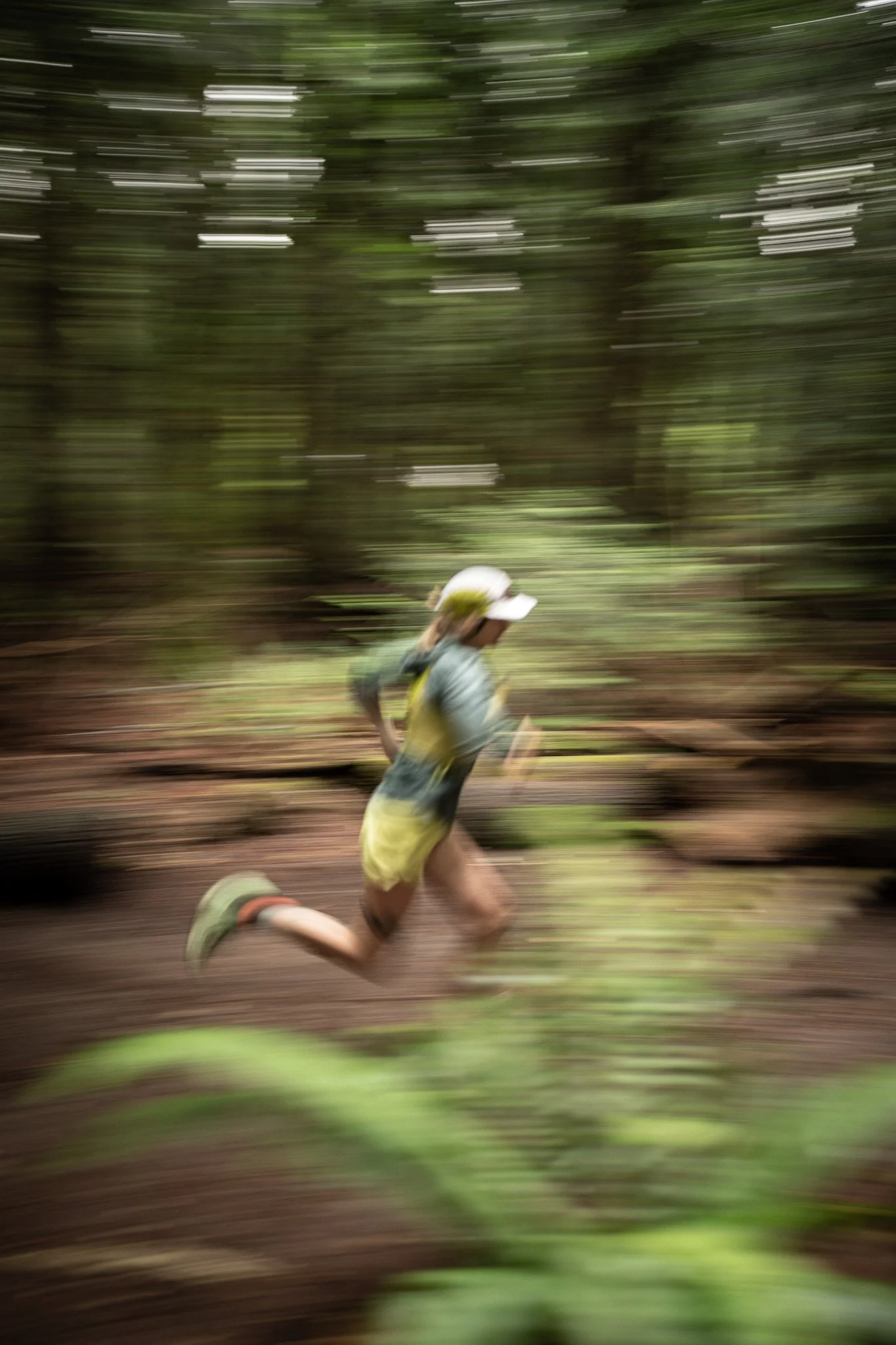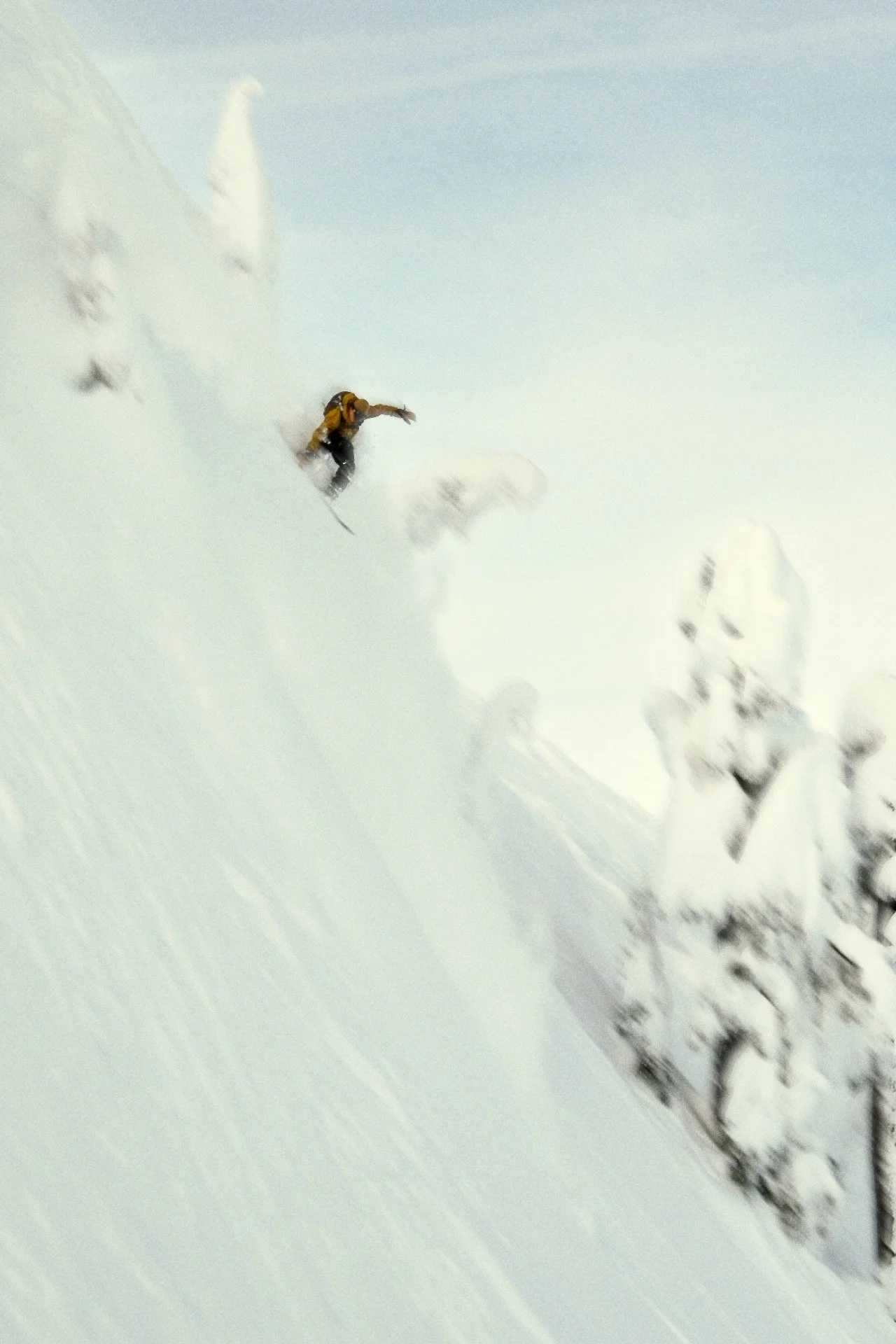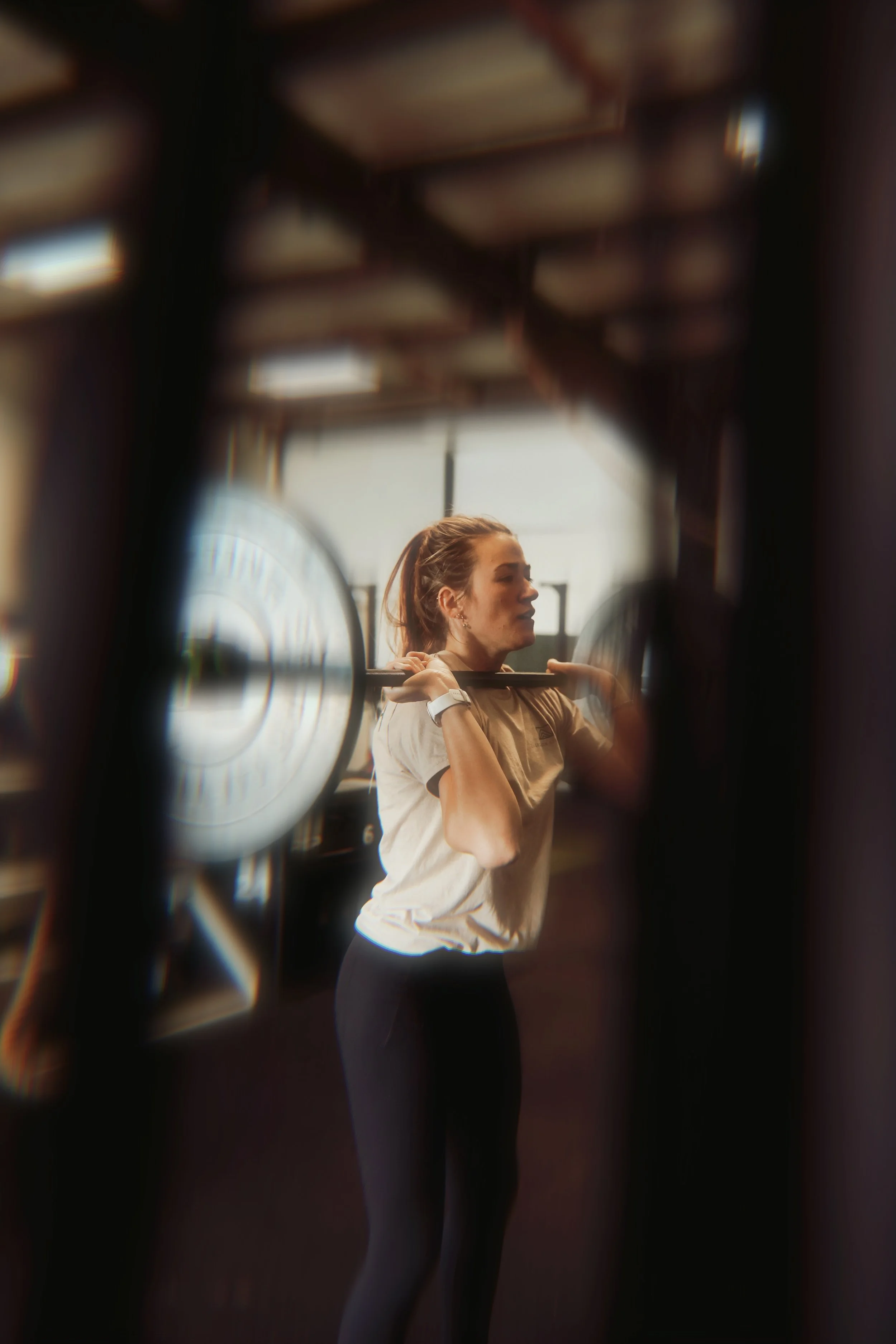Week 02
Welcome to week 2 of our Winter Training Program. Congrats on making it through our testing week!
We will be using these metrics to help us determine starting points for our future lifts, as well as re-testing both our lifts and conditioning pieces during week 8.
This week we will be looking at higher rep schemes for our lifts to build strong muscles for long periods of time out on the slopes and a strong foundation for our future PRs during re-test week. We're also emphasizing controlled landings in our dynamic movements
We are also reverting back to our normal programming days. Mondays, Wednesdays, and Fridays will be our Mountain Sport programming while Tuesdays and Thursdays will be our Mountain Strength programming. .
Day 01
Strength
Barbell deadlift - 5 sets - 8 reps
Depth drop - 5 sets - 5 reps
Auxiliary Work
Kettlebell front rack reverse lunge -
4 sets - 8 reps
Forearm side plank - 4 sets - 30 secs
Single leg back elevated glute bridge -
4 sets - 10 reps
Russian twist - 4 sets - 10 reps
Day 02
Strength
Barbell hang power clean - 5 sets - 5 reps
Conditioning (Rounds for Time)
50 rounds: Complete as fast as possible, rest as needed
Dumbbell devil's press - 1 rep
Dumbbell farmer carry lateral box step over - 2 reps
Dumbbell thruster - 3 reps
Day 03
Strength
Barbell bent over row - 5 sets - 8 reps
Conditioning Auxiliary Work
Kettlebell staggered stance suitcase deadlift - 3 sets - 8 reps
Kettlebell Romanian deadlift -
5 sets - 10 reps
Supine dumbbell pull over - 3 sets - 10 reps
Jumping pull up - 3 sets - 15/20 reps
Hollow hold - 3 sets - 30 secs
Day 04
Strength
Dumbbell standing strict press -
4 sets - 8 reps
Conditioning Rounds for Time
Complete 4 rounds of the indicated movements as quickly as possible.
run - 0.5 miles (800m)
Dumbbell push press - 10 reps
Dumbbell renegade row - 5 reps
Barbell bent over row - 4 sets - 8 reps
Band row + twist - 4 sets - 8 reps each side

SKI & SNOWBOARD TRAINING PLAN
Get Slope-Ready with Evergreen GO.
Download our App to unlock structured skiing & snowboarding programming — designed to build the strength, endurance, and resilience you need for the mountains.
- Step-by-step training schedule tailored for skiers & snowboarders
- Guided strength & conditioning workouts
- Community resources and access to our coaches
How to reduce risk of injury for skiing & snowboarding
Skiing and snowboarding place stress on knees, hips, and back. Smart preseason training helps by:
- Build leg and glute strength with squats, lunges, and step-ups to protect your knees on steep descents - Train your core and lower back with planks, carries, and anti-rotation movements for stability under a heavy pack - Add ankle and hip stability drills to improve balance on uneven terrain - Progress your training gradually
The key to building resilience to injuries is combining strength work, mobility drills, and progressive loading. Here’s how:
Preparing your body in advance ensures your hiking training plan builds strength without breaking you down, so you arrive at the trail feeling confident, not injured.
FAQ’s
-
To get in shape for ski season, focus on a preseason ski training plan that focuses on strength and conditioning. Lower extremity exercises like squats and lunges build strength, while aerobic and anaerobic conditioning prepares you for long days on the slopes. Add some dynamic core and stability exercises to reduce risk of injury.
-
Most winter athletes do best with 8–12 weeks of consistent training to feel fully prepared, but even 4–6 weeks can make a difference. The more time you give yourself, the more you can build strength, improve muscular endurance, and reduce the risk of injuries when the season starts.
-
If you only have a month, focus on high-impact preseason ski exercises: Bodyweight calisthenics like squats, lunges and progressive plyometrics. in addition to core work and interval sessions. Training 4–5 days per week can noticeably boost fitness in just 30 days. Be mindful of progression and ramping up intensity as you go.
-
An 8-12 week ski training plan should balance strength, power and aerobic capacity. Focus on lower extremity strength with functional movement patterns that target quads, hamstrings and glutes. Don’t leave out upper body strength and core to tie it all together. A mix of longer aerobic and more intense anaerobic conditioning should round it out. Aim for 3-5 days of training per week.
-
Start your ski preseason training 8–12 weeks before your first day on the mountain. This gives your body time to progressively adapt and build strength in a safe manner.
-
The best ski exercises focus on leg strength with lower push and hinge movement patterns as well as explosive strength exercises including plyometrics to increase power. Additionally, advanced core strength will help you charge harder and manage dynamic terrain.
-
Improve knee resilience injuries by strengthening glutes, hamstrings, and quads, while also improving hip and ankle mobility. A balanced ski workout plan lowers the risk of ACL tears and keeps your knees stable on the slopes.
-
Yes. Skiing and snowboarding require explosive power, balance, and rotational strength that not all general workouts cover. Ski-specific strength training ensures your muscles and joints are ready for the unique demands of the mountain.
-
Get stronger. Strength and power lead to stability and balance. Keep it simple and focus on compound lifts as well as unilateral exercises. Throw in high intensity conditioning to practice moving while under duress with a high heart rate.




